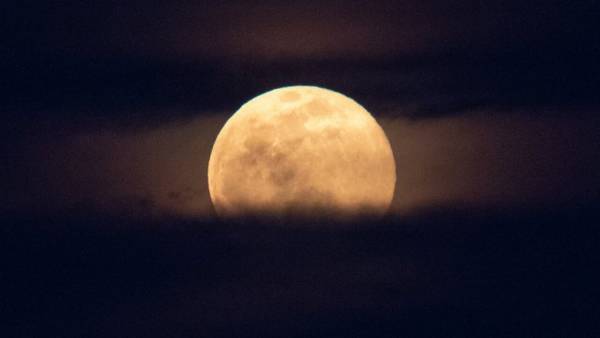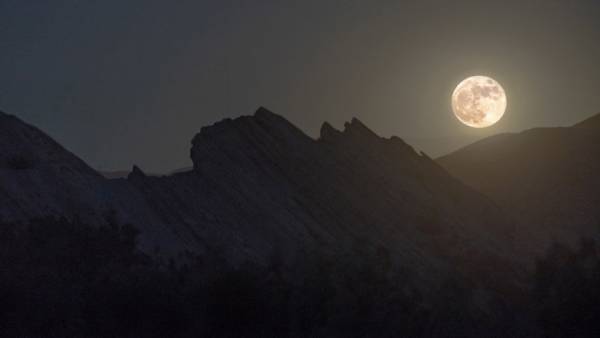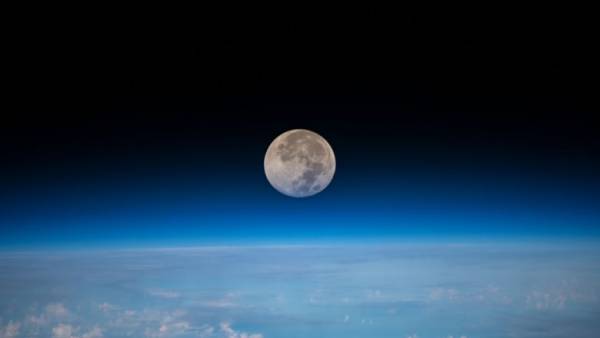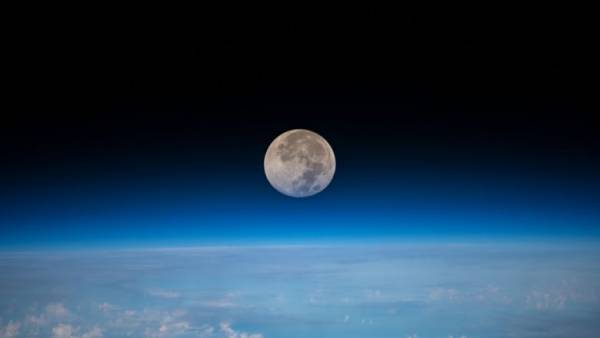
On January 2, 1839, the French artist, chemist, inventor and one of the creators of photography Louis Daguerre made the first survey of the Moon. After that, people were able not only to take pictures of the Moon directly from space, but also to visit the lunar surface. In this regard, we decided to recall the most interesting facts that humanity has learned about the Moon over these almost two centuries. The numbers will help us in this.
384,400 kilometers
It is at this average distance from the Earth that the Moon is located — the only natural satellite of our planet and the closest celestial body to the Earth. But scientists have calculated that the Moon is moving away from us at a rate of about 3.8 cm per year. Computer simulations showed that at the very beginning the Moon was at least ten times closer to the Earth and looked ten times larger in the sky. And after about 600 million years, its apparent size in the sky will decrease so much that total solar eclipses will no longer be visible from Earth.
3,474.8 kilometers
And this is the average diameter of the moon. With such data, it ranks fifth in the list of the largest satellites of the Solar System — only Ganymede, Titan, Callisto and Io (the satellites of Jupiter and Saturn). The mass of the Moon is 81 times less than the mass of the Earth, and the volume is almost 50 times less. The surface area of the Moon is 58 million square kilometers, which is more than the area of Africa, but less than the area of Asia.
But, like any body in the universe, the moon is subject to change. Scientists have found that over the past few million years, its area has decreased by 50 square meters. This was due to the slow cooling of the inner part of the satellite.

59 percent
Only 59% of the lunar surface can be seen from Earth, as it rotates around our planet “face down”. Over 40% of the visible surface of the Moon is occupied by seas – dark low-lying areas covered with frozen lava deposits. But the reverse (dark) side of the moon is noticeably different. On average, it is higher, most of the largest lunar craters are located on it, and there are only two seas there.
13 percent
So much is the reflectivity (albedo) of the Moon’s surface. This is almost three times less than the albedo of the Earth. That’s because the moon doesn’t have an atmosphere with clouds and water that could reflect light better. Often, in joint pictures of the Moon and the Earth, the first one is specially highlighted.

5 thousand years
This is the approximate age of the oldest map of the moon. It was carved in stone by the ancient inhabitants of Ireland and schematically depicted lunar seas (dark spots) on it.
By the way, the Moon is also mentioned in the first recorded song. In 1860, French inventor Edouard-Leon Scott de Martinville created a ten-second recording of the French folk song “In the Moonlight” (Au Claire de la Lune).
108 million years
Scientists believe that this is how old the most famous lunar crater with the Tycho ray system is. According to radioisotope analysis of lunar samples, this crater was formed 108 million years ago, when dinosaurs still reigned on Earth.

-173 degrees Celsius
The temperature on the Moon can drop to such a mark in the shade after sunset. But when sunlight hits the surface of the satellite again, it can heat up to 127 degrees Celsius. At the same time, the temperature of rocks lying at a depth of 1 meter is constant and equal to -35 degrees Celsius.
onethousandninehundredfiftynine
It was this year that the world’s first spacecraft reached the lunar surface —
the Soviet station “Luna-2”. In the same the year “Luna-3” sent the first ever images of the reverse side of the satellite.
On September 15, 1968, the Soviet spacecraft Zond-5 flew around the moon with the first living creatures: Central Asian steppe turtles, fruit flies, beetles, as well as various plants, seeds and microorganisms. And a year later, in 1966, there was
the first soft landing. It was the Soviet Luna-9 station, which transmitted to Earth the first-ever panoramas of the lunar surface, measured the intensity of radiation and confirmed the meteor-slag theory of the formation of the lunar soil.

12 people
So many people have ever set foot on the surface of the moon. They are all American astronauts, and none of them has descended to the satellite twice. The first man to set foot on the moon was Neil Armstrong in 1969, and the last man to stand on the moon was Eugene Cernan in 1972. In total, 24 astronauts participated in expeditions to the Moon.
One funeral
The only person in history is buried on the moon – geologist, planetary scientist, founder of astrogeology Eugene Shoemaker, who was obsessed with space, but due to health problems could not become an astronaut. Shoemaker’s dream to visit space was fulfilled after his death. In 1998, his ashes were sent to the moon with the Lunar Prospector mission, which was looking for water ice at the poles.
A year later, the device fell to the surface of the satellite along with the ashes, making the scientist the only person actually buried on the moon. By the way, a monument to the deceased American and Soviet cosmonauts is also installed on the satellite. This is a ten-centimeter aluminum figure of a man and a metal plaque on which the names of the deceased space explorers are written.

40 million “moon owners”
This is an approximate number (as of 2020) of people who own plots on the moon. About 20 thousand of them are residents of Russia. The minimum purchase size is about 40 acres. Such lunar plots are sold on the visible side of the satellite, since they allow for “surveying” and the owner can see the boundaries of his site and evaluate it. The ownership is confirmed by the certificate. However, such purchases, of course, have no legal force and act only as an original gift.
Ekaterina Gura